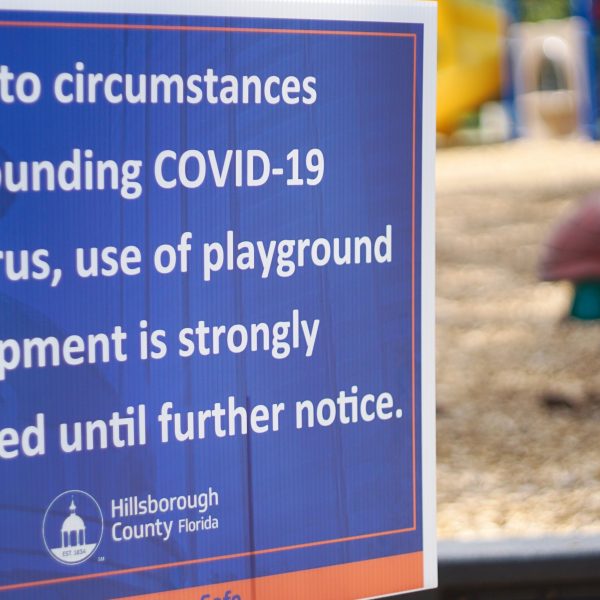COVID-19 – Implications for Employers series – Part One – Safety

Over the coming days The Sector will be bringing you an informative series, designed to explore the implications of the COVID-19 pandemic for employers. Covering issues such as employee safety, workplace obligations, leave entitlements and managing business continuity, the series is a must read, tailored to the early childhood education and care (ECEC) sector, based on generalised advice from law firm Corrs, Chambers, Westgarth.
In part one of the series, we explore safety, including the importance of assessing risk, employer responsibilities and what safety controls are available to leaders and managers as they seek to navigate the changing landscape of responsibility during the pandemic.
Safety of employees is likely to be an issue for employers at a global level. Where risks to health are identified, employers must, so far as is reasonably practicable, eliminate or otherwise minimise risk to employees.
The type of controls required to address the risk of COVID-19 will depend on the level of risk as well as the availability and suitability of controls for each workplace. The availability of controls in the ECEC workplace, such as soap, hand sanitiser and face masks currently presents a challenge in some locations.
Some controls which are practical in a medical environment, such as personal protective equipment (PPE) may not be suitable in an early childhood setting. Educators and others employed in ECEC settings should be reminded of existing policies, processes and procedures in relation to tasks such as nappy changes, face washing and cleaning of the environment to ensure best practices are implemented.
Employers in the ECEC environment should review their infectious disease protocols and ensure they are up to date and shared with all workers.
Responsibilities
In general, employers must, so far as reasonably practicable;
- provide and maintain a working environment that is safe and without risks to the health of employees and other persons;
- provide information, instruction, training or supervision as is necessary to protect all persons from risks to their health. Any information, instruction and training needs to be provided in a way that is readily understandable, so any language barriers will need to be considered;
- monitor the health of employees and other persons at all workplaces;
- monitor conditions at all workplaces; and,
- ensure that persons other than employees are not exposed to risks to their health or safety arising from the operations of the employer.
Those who are employed, and those who are in the workplace for other reasons also have responsibilities. In general terms, employees and other persons must:
- take reasonable care for their own health and safety;
- take reasonable care that their acts or omissions do not adversely affect the health and safety of other persons; and,
- co-operate, so far as reasonably able, with any reasonable instructions given by the employer so the employer can comply with its responsibilities.
Risk
Employers need to identify any opportunities for risk to the health and safety of employees and others attending their worksite from exposure to COVID-19.
Risk may be identified by:
- monitoring expert advice as the COVID-19 situation develops;
- reviewing the implementation of infection control policies, procedures and practices to ensure they are effective and are being followed;
- educating and keeping persons at the workplace up to date on new information;
- consulting with others with whom the employer works, particularly contractors and labour hire providers to ensure they are also being active, to the extent necessary, in managing the risk;
- monitoring the latest travel advice on the Smartraveller website; and,
- considering whether work activities put other people at risk.
Controls
Where a risk to health and safety has been identified in a workplace, such as the presence of COVID-19 within a community, employers need to select controls to manage exposure to that risk.
The type of controls required will depend on the level of risk as well as the availability and suitability of controls for each workplace, and may include:
- providing adequate facilities or products (such as hand sanitiser) to allow employees and other persons to maintain good hygiene practices;
- advising employees and other persons to self-isolate at home for 14 days in line with Government and health authority recommendations; and,
- developing an infection control policy. Employers need to know how they will manage any confirmed or suspected cases at the workplace.
Please note, the advice given above is general in nature, and is not intended to replace the advice or resources put forward by relevant state and territory health authorities. Although every effort has been made to ensure the information presented above is both timely and accurate, leaders are encouraged to consider their own unique circumstances before implementing the advice put forward.
Popular

Quality
Practice
Provider
Research
Workforce
Honouring the quiet magic of early childhood
2025-07-11 09:15:00
by Fiona Alston

Practice
Provider
Quality
Research
Workforce
New activity booklet supports everyday conversations to keep children safe
2025-07-10 09:00:16
by Fiona Alston

Quality
Practice
Provider
Workforce
Reclaiming Joy: Why connection, curiosity and care still matter in early childhood education
2025-07-09 10:00:07
by Fiona Alston












